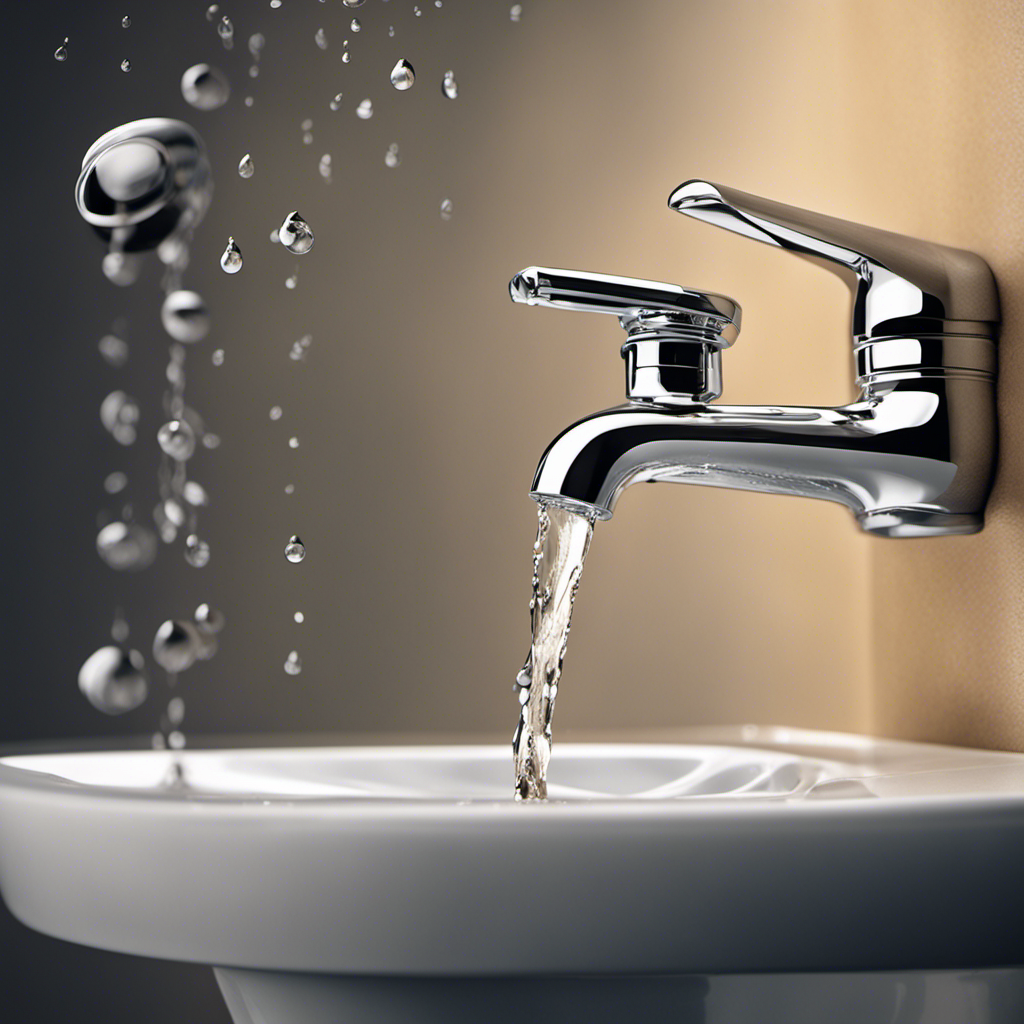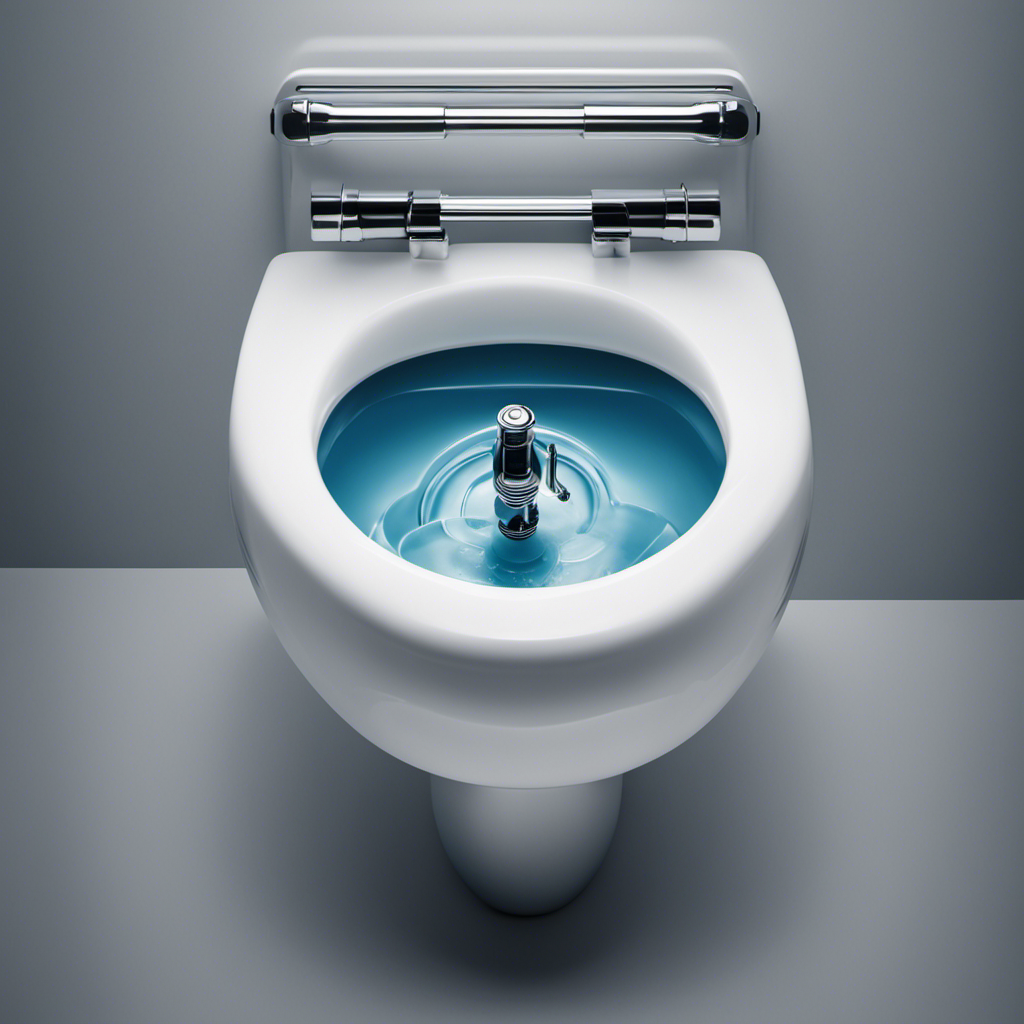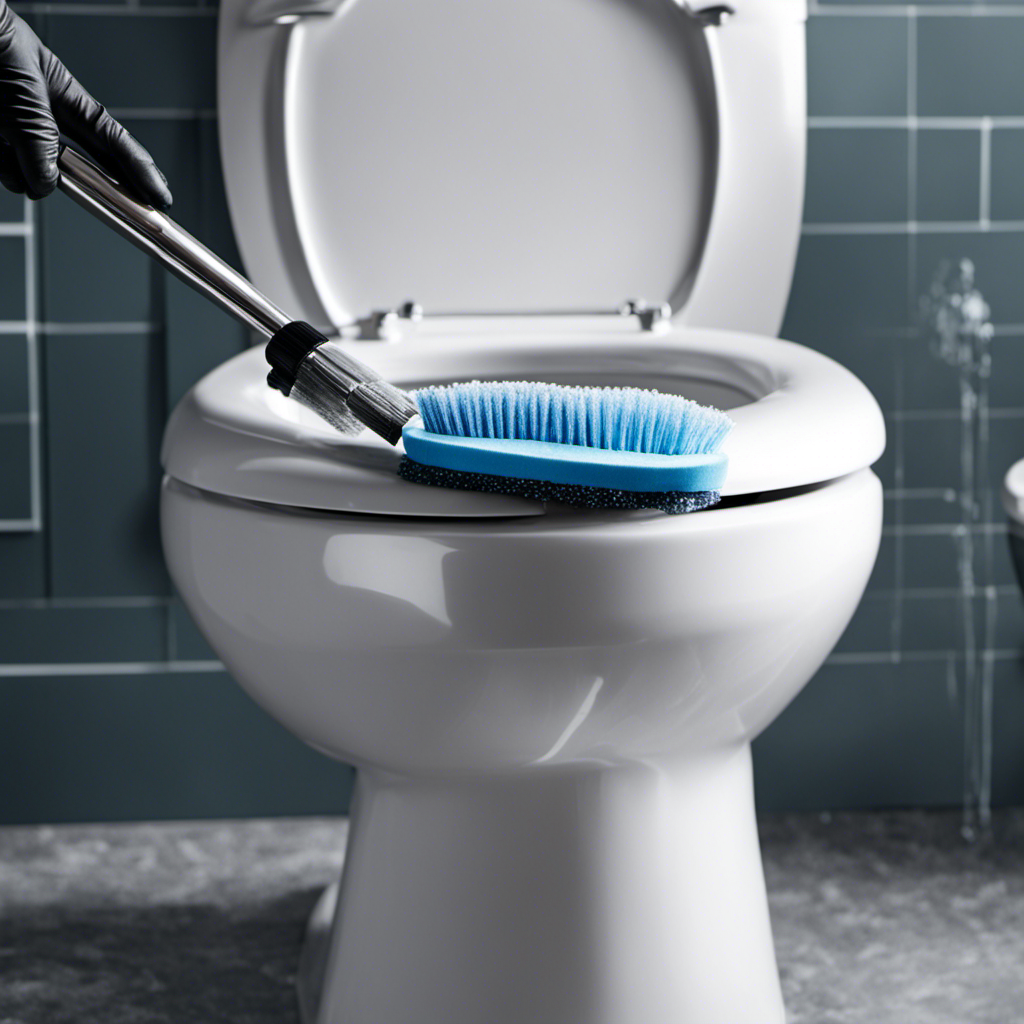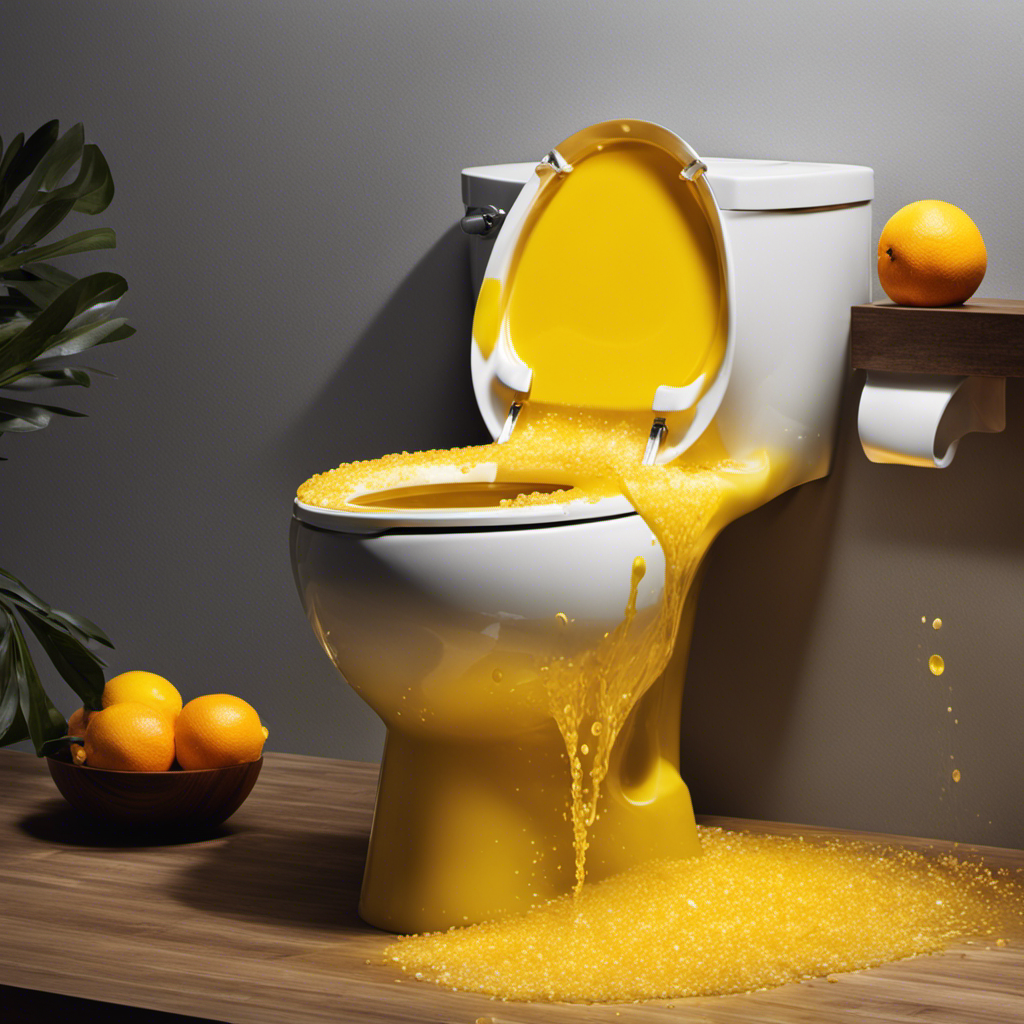Imagine the frustration of hearing a constant, nagging drip in the middle of the night. The sound of a running toilet can drive anyone crazy.
But fear not, for I have the solution! In this article, I will guide you through the steps to stop your toilet from running.
From checking the flapper valve to adjusting the fill valve, we’ll cover all the necessary troubleshooting techniques to fix this annoying issue once and for all.
Let’s get started!
Key Takeaways
- The most common reasons for a running toilet are a faulty or damaged flapper valve, improper alignment or connection of the flapper valve and flush lever, and a loose or tight chain connecting the flush lever and flapper valve.
- Checking and troubleshooting the flapper valve is crucial in resolving a running toilet issue, including inspecting for wear or damage, cleaning or replacing the flapper for a tight seal, and adjusting the chain length for optimal performance.
- Repairing a faulty flapper involves turning off the water supply, inspecting the flapper for wear or misalignment, repairing or adjusting the chain connection if the flapper is in good condition, and replacing the flapper if it is damaged.
- Adjusting the fill valve and cleaning or replacing the float can also help stop a running toilet, including turning off the water supply, locating the fill valve, using a screwdriver or pliers to adjust the water level, lowering the float by turning the adjustment screw or rod, and replacing the rubber flapper on a leaky flush valve.
Reasons for a Running Toilet
One of the reasons your toilet may be running is if the flapper valve is not sealing properly. This is a common toilet problem that can be easily fixed.
When the flapper valve doesn’t seal properly, water continuously leaks from the tank into the bowl, causing the toilet to run. To troubleshoot this issue, first, check if the flapper valve is worn out or damaged. If it is, replace it with a new one.
Make sure the flapper valve is properly aligned and connected to the flush lever. Additionally, check if the chain connecting the flush lever to the flapper valve is too loose or too tight. Adjust it accordingly so that the flapper valve can seal properly when the toilet is not in use.
Checking the Flapper Valve
When it comes to troubleshooting a flapper valve, there are a few key points to keep in mind.
Firstly, a faulty flapper can cause a running toilet or a leaky tank, leading to wasted water and higher bills.
Secondly, inspecting the flapper for any signs of wear or damage is crucial in determining if it needs to be repaired or replaced.
Lastly, properly repairing a faulty flapper involves cleaning or replacing the flapper, ensuring a tight seal, and adjusting the chain length for optimal performance.
Flapper Valve Troubleshooting
To fix a running toilet, start by checking if the flapper valve is closing properly. Troubleshooting flapper valve issues is a common task when dealing with a toilet that won’t stop running.
One of the most common flapper valve problems is a worn or damaged flapper. Over time, the flapper can deteriorate or become misaligned, causing water to continuously leak into the toilet bowl.
Another issue could be a buildup of mineral deposits on the flapper, preventing it from creating a proper seal. In some cases, the chain connecting the flapper to the flush handle may be too loose or tangled, preventing the flapper from closing tightly.
Repairing a Faulty Flapper
A worn or misaligned flapper can cause water to continuously leak into the toilet bowl. To repair a faulty flapper, follow these steps:
-
Turn off the water supply: Locate the shut-off valve near the base of the toilet and turn it clockwise to stop the water flow.
-
Remove the tank lid: Lift the lid and set it aside in a safe place.
-
Inspect the flapper: Check for any signs of wear or misalignment. If the flapper is damaged, it needs to be replaced.
-
Repair or replace: If the flapper is in good condition, check the chain connection. Adjust or repair the chain as needed. If the flapper is damaged, replace it with a new one.
Remember to test the toilet after completing the repairs to ensure that the leak has been resolved. If the issue persists, you may need to consider replacing the fill valve.
Adjusting the Fill Valve
You can adjust the fill valve to stop the toilet from running. If your toilet is running constantly, it may be due to water pressure issues or a faulty fill valve.
To adjust the fill valve, start by turning off the water supply to the toilet. Locate the fill valve, which is usually located on the left side of the toilet tank. Use a screwdriver or pliers to adjust the water level by turning the adjustment screw or knob clockwise to decrease the water level or counterclockwise to increase it.
Make small adjustments and test the toilet after each adjustment until the running stops. If adjusting the fill valve does not solve the problem, you may need to consider replacing it with a new one.
Cleaning or Replacing the Float
When it comes to troubleshooting common toilet issues, there are two key points to consider: adjusting the float level and replacing a damaged float.
The float level determines how much water is allowed to enter the tank. Adjusting it can help prevent problems like constant running or overfilling.
If the float itself is damaged or malfunctioning, replacing it is a simple solution that can restore the proper functioning of the toilet.
Adjusting Float Level
To stop the toilet from running, try adjusting the float level. The float is a small, buoyant object that controls the water level in the toilet tank. If the float is set too high, the water will continuously flow into the tank, causing the toilet to run.
Here are some steps to troubleshoot float issues and adjust the float level:
- Locate the float adjustment screw or rod on the fill valve.
- Turn the screw or adjust the rod to lower the float.
- Flush the toilet and observe the water level. Continue adjusting until the water stops running.
- Test the toilet multiple times to ensure the float is properly adjusted.
Replacing Damaged Float
By replacing the damaged float, you can effectively resolve any issues with the water level in the toilet tank. The float mechanism is responsible for regulating the flow of water into the tank, ensuring that it doesn’t overflow. If the float is damaged or malfunctioning, it can cause the toilet to constantly run, wasting water and increasing your utility bills.
To repair the float mechanism, you will need to purchase a replacement float. You can find these at most hardware stores or online retailers. Make sure to choose a float that is compatible with your toilet model.
Once you have the replacement float, follow the manufacturer’s instructions to remove the old float and install the new one. This simple repair should fix the water level issue and stop your toilet from running.
Fixing a Leaky Flush Valve
You can fix a leaky flush valve by replacing the rubber flapper. When a flush valve is leaking, it can lead to water wastage and higher water bills.
Here’s a step-by-step guide on how to fix a leaky flush valve:
-
Turn off the water supply: Locate the water shut-off valve behind the toilet and turn it clockwise to shut off the water supply.
-
Remove the tank lid: Lift the tank lid and set it aside in a safe place.
-
Remove the old flapper: Disconnect the chain that connects the flapper to the flush handle. Then, carefully remove the old flapper from the flush valve.
-
Install the new flapper: Take the new rubber flapper and align it with the flush valve opening. Attach the chain to the flapper and adjust the length if necessary.
Inspecting the Overflow Tube
Inspecting the overflow tube can help determine if it is the cause of a leaky flush valve. The overflow tube is a vital component of a toilet’s flushing system, and if it is not functioning properly, it can lead to a constant running of water. To troubleshoot a running toilet, it is important to check the overflow tube for any issues. Here is a table that outlines the steps for inspecting the overflow tube:
| Steps for Overflow Tube Inspection |
|---|
| 1. Shut off the water supply to the toilet. |
| 2. Remove the tank lid and locate the overflow tube. |
| 3. Check for any cracks or damage on the tube. |
| 4. Ensure that the tube is properly connected to the flush valve. |
| 5. If necessary, replace or repair the overflow tube. |
Inspecting the overflow tube allows you to identify any potential problems and take the necessary steps to fix them. By following these steps, you can troubleshoot and resolve issues with a running toilet effectively.
Troubleshooting Persistent Running Issues
To troubleshoot persistent running issues, it’s important to check if the overflow tube is properly connected to the flush valve. This is a common cause of continuous water flow in toilets. Here are some steps you can take to troubleshoot the issue:
-
Check water pressure: Low water pressure can cause the toilet to run continuously. Ensure that the water supply valve is fully open and that there are no obstructions in the water line.
-
Inspect the flapper: A worn or misaligned flapper can prevent the tank from sealing properly, leading to a constant flow of water. Check the flapper for any signs of damage or debris and replace if necessary.
-
Look for leaks: Plumbing leaks can also cause a toilet to run persistently. Examine the base of the toilet, the water supply line, and the fill valve for any signs of leakage. Repair or replace any faulty components.
-
Adjust the fill valve: Sometimes, the fill valve may need adjustment to control the water level in the tank. Follow the manufacturer’s instructions to adjust the float or water level to the appropriate setting.
Frequently Asked Questions
Can a Running Toilet Cause an Increase in Water Bills?
Yes, a running toilet can cause an increase in water bills. The continuous flow of water results in higher water consumption, leading to an increase in utility bills. It is important to address this issue promptly to avoid unnecessary expenses.
How Much Water Is Typically Wasted by a Running Toilet?
Running toilets can waste a significant amount of water, leading to higher bills and negative environmental impact. It is important to address the issue promptly to conserve water and minimize its wastage.
Can a Running Toilet Lead to Water Damage in the Bathroom?
A running toilet can cause water damage in the bathroom if not addressed promptly. Signs of water damage to look for include wet floors, peeling paint, and mold growth. Here are some toilet repair tips to prevent further damage.
Are There Any Health Risks Associated With a Running Toilet?
Health risks associated with a running toilet include waterborne illnesses from contaminated water, mold growth due to excess moisture, and potential damage to the bathroom floor. Toilet malfunctions should be addressed promptly to avoid these health hazards.
Is It Necessary to Hire a Professional Plumber to Fix a Running Toilet?
It’s not always necessary to hire a professional plumber to fix a running toilet. There are many DIY techniques that can be used to address common causes of a running toilet.
Conclusion
In conclusion, knowing how to stop a running toilet can save you from wasting water and money. By checking and adjusting the flapper valve, fill valve, and float, you can easily fix the problem.
Additionally, fixing a leaky flush valve and inspecting the overflow tube can help troubleshoot persistent running issues. Did you know that a running toilet can waste up to 200 gallons of water per day?
Taking the time to address this issue can make a big difference in conserving water and reducing your water bill.










